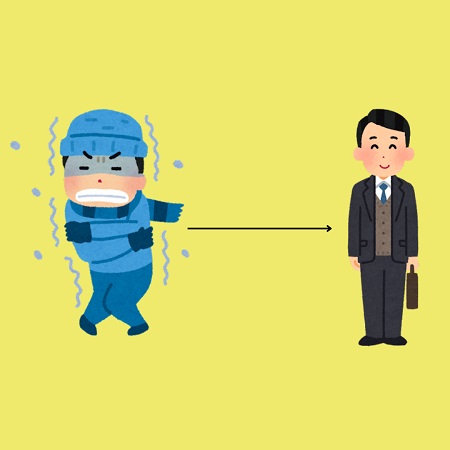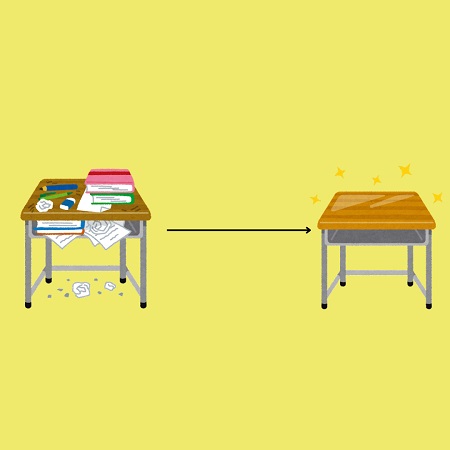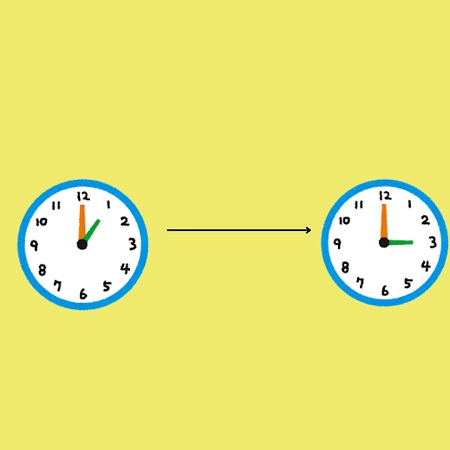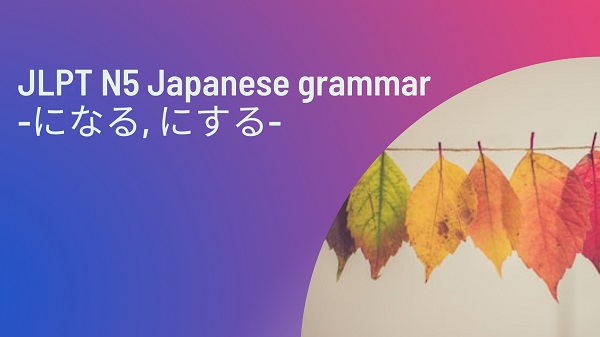You have endured the cold weather, but now it’s getting warmer.
The weather is changing.
How can we explain a changing situation in Japanese?
In this article, I will teach you how we can describe change in Japanese.
*Are you looking for a place to practice Japanese?
Youtonihongo is for you.
You may receive one free 30-minute trial lesson.
になる
We use “く or に なります” when we talk about a logical or normal change.
Conjugation
・イ adjective: いく+なる
おおきい→おおき→おおきくなる
いい→よくなる
・ナ adjective: に+なる
しずかになる
・Nounに+なる
せんせいになる
If you don’t know what イ and ナ adjective is, please read this article.
Learning Japanese grammar-adjectives conjugation
Let’s see some examples.
It’s getting warmer, right?

In this case, you are probably talking in the beginning of spring.
It’s been very cold, but now it’s getting warmer.
The cold weather has changed.
You can say that あたたかくなりましたね。
My child became a teacher.

Your child wasn’t a teacher, but now they are a teacher.
The situation changed.
As these examples, when situation changed, we can use になる.
にする
We use “く or に する” when we talk about purposely changing something.
・イ adjective: いく+する
あまい→あま→あまくする
いい→よくする
・ナ adjective: に+する
しずかにする
・Nounに+する
やすみにする
Let’s see some examples.
I’m going to clean the desk.

In this case, the desk is dirty or messy.
Therefore, you want to clean the desk.
You made the desk clean.
Please change the meeting time to 3 pm.

In this case, the meeting time can no longer be 3 pm and you will only be able to attend the meeting at only 3 pm..
That’s why you want to change the meeting time.
In this case, you could say 3じに して ください。
How can you ask people for a favour?
Please read this article as well.
What is te kudasai? -Japanese grammar-
As these examples, when you changed something with your will, you can use “にする”.
conclusion

We use “く or に なります” when we talk about a logical or normal change.
Conjugation
・イ adjective: いく+なる
・ナ adjective: に+なる
・Nounに+なる
We use “く or に する” when we talk about purposely changing something.
・イ adjective: いく+する
・ナ adjective: に+する
・Nounに+する
Exercise
① にほんごが (すきです→ )なりました。
② おこさん (おおきいです→ )なりましたね。
③ (しずかです→ )してください。
④ いまから このさかなを (さしみです→ )します。
⑤ きょうは たいふうで がっこうが (やすみです→ )なりました。
⑥ ぼくは (けいさつかんです→ )なりたい。
⑦ このズボンを (みじかいです→ )してください。
⑧ 見えないから、(おおきいです→ )してください。
⑨ スマートホンの おかげで (べんりです→ )なりました。
⑩ びょうきが (いいです→ )なりました。
Answer
① にほんごが (すきです→すきに)なりました。
② おこさん (おおきいです→おおきく)なりましたね。
③ (しずかです→しずかに)してください。
④ いまから このさかなを (さしみです→さしみに)します。
⑤ きょうは たいふうで がっこうが (やすみです→やすみに)なりました。
⑥ ぼくは (けいさつかんです→けいさつかんに)なりたい。
⑦ このズボンを (みじかいです→みじかく)してください。
⑧ 見えないから、(おおきいです→おおきく)してください。
⑨ スマートホンの おかげで (べんりです→べんりに)なりました。
⑩ びょうきが (いいです→よく)なりました。
If you have questions, please comment below.
If you’d like to learn more Japanese, please feel free to contact me.
I teach Japanese in-person or online.
You can also learn Japanese on my Instagram page.

The free trial class online
We offer online classes and in person classes



